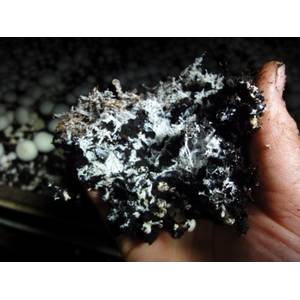On many farms I see lots of problems with quality and particularly production in the second and third flushes. This immediately prompts a close examination of the compost, although the problem has developed at the start of cultivation in the casing soil.
Casing soil acts as a water buffer. That is nothing new. But after the first flush this casing soil is often as solid as a rock and the buffer effect has all but disappeared. I am getting on a bit, so I can say: “You used to see really coarse mycelium.” The casing soil then wasn’t much coarser in structure. So what has happened? Nowadays, growers work to a much faster cropping cycle and so use CAC in their preparations. Ten to fifteen years ago, growers still ruffled after six to seven days, and started cool down on day eight or nine. This method led to coarser structured mycelium in the casing soil, also helped by the fact that a later cool down meant the compost was less active.
These are precisely the two aspects that are giving us problems today. More mycelium and more active compost, forcing growers to use higher temperatures in order to limit the number of mushrooms. However, this approach simply results in even more mycelium. Sometimes it’s a good idea to go back to basics: less compost at casing or not using the method at all, coarser mycelium and , above all, less mycelium in the casing soil. The casing soil will then stay soft during the first flush and will have a better water absorption capacity. That water will evaporate, also during the second flush, to the benefit of quality and production!
Bron: Mushroom Blog – Mark den Ouden

Copyright © 2024 – All rights reserved
This website uses cookies to ensure you get the best experience on our website.